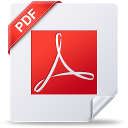Аннотация:
This book is written primarily for students enrolled in the course "Engineering Mathematics III (Differential Equations and Linear Algebra)" (ENG200) at Nazarbayev University. ENG200 is a compulsory course offered to all 2nd-year engineering students. This course has a computational lab session where students are expected to practice what they have learned in the theoretical sessions on computers with Wolfram Mathematica. The content of the book has been designed to equip young engineering students with as much knowledge on all topics as is desirable from the point of view of the ENG200 course learning outcomes. Efforts have been made to make the fundamental subjects in every engineering curriculum, such as Ordinary Differential Equations (ODEs) and Linear algebra, more exciting and engaging with the help of the Wolfram Mathematica language. Every subject (listed in the table of contents) has been summarized and supported by several solved sample problems. In addition to analytical math skills, the book helps to learn a new Wolfram Mathematica programming software. Learning Wolfram Mathematica takes time, effort, and dedication, like acquiring any new skill. Therefore, we believe this learning journey will also benefit our readers to become more self-disciplined.


